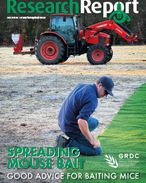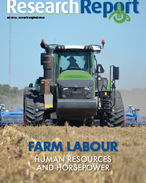This article is 1 year old. Images might not display.
Australian Bureau of Agricultural and Resource Economics and Sciences (ABARES) executive director, Dr Jared Greenville, said the cumulative value of loans outstanding has increased from $100.7 billion on 30 June 2021 to $109.9 billion on 30 June 2022.
"The data also shows lending to the farm sector since 2016-17 has increased at an accelerating rate each year," Dr Greenville said.
Dr Greenville said for broadacre and dairy farms—which collectively accounted for around 68 per cent of the value of farm output in 2021-22— the two main reasons for borrowing had been to fund land purchases and for working capital.
"Analysis of ABARES farm survey data shows that much of this increase in borrowing has been for on-farm investment, particularly land purchases. Debt finance is of critical importance, both to fund new investment and manage variability in revenue and profit," he said.
"Rising land prices and low interest rates until recently have provided farmers with greater equity to support increased borrowings, while historically high farm incomes in most agricultural industries have substantially improved farmers' ability to service debt.
"Up to the end of 2022, the average proportion of farm cash income consumed by interest payments had trended down in recent years due to higher farm incomes and lower interest rates.
"In 2021-22, the average proportion of income consumed by interest payments was eight per cent for broadacre and dairy farms—an historical low. However, this proportion is likely to have increased since as a result of recent increases in interest rates.
"The impact of higher interest rates will be felt by some farms more than others. Those farms with relatively high debt servicing burdens will be most susceptible to interest rate increases, if this were combined with a downturn in farm cash income it would impact their ability to service debt."
The APRA report draws together data collected on behalf of the Australian Government Department of Agriculture, Fisheries and Forestry. Data are also drawn from the Reserve Bank of Australia, the Regional Investment Corporation and ABARES farm surveys.
Read the Trends in farm debt: Agricultural lending data 2021-22 report here: https://www.agriculture.gov.au/abares/research-topics/surveys/farm-debt






















